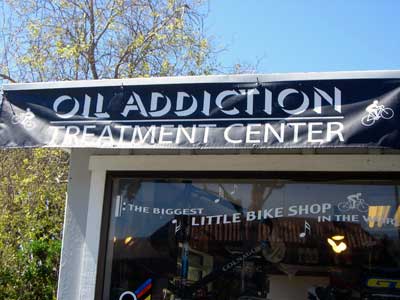The $120 Billion Hidden Cost of Our Addiction
 For a long time now people have argued that if you internalised the external costs of our fossil fuel addiction, we would soon realise that our habit was too expensive and we would be left with no alternative but to kick our dirty ways.
For a long time now people have argued that if you internalised the external costs of our fossil fuel addiction, we would soon realise that our habit was too expensive and we would be left with no alternative but to kick our dirty ways.
So a new report from the US National Research Council has tried to do just that.
It has examined, when and where possible, the “hidden” costs of energy production and use — such as the damage air pollution imposes on human health — that are not reflected in the current price of electricity or gasoline you stick in your tank.
Adding up issues such as air pollution from power stations and cars, the NRC came up with a whopping $120 billion hidden damages in the US alone in 2005.
Moreover – and this is a big moreover – this does not include damages from climate change, or indirect harm to ecosystems, and the wider costs of threats to national security.
Requested by Congress, the report undertook a life cycle analysis for 2005, the last date the data was available. Not surprisingly, the biggest contributors to these extra costs were coal-fired power plants, which generate half of the nation’s power but which also accounted for $62 billion in hidden damages associated with the emissions of pollutants like sulfur dioxide and nitrogen oxide, and particulate matter like soot or fine dust.
Then there is the climate damage too: “Coal-fired power plants are the single largest source of greenhouse gases in the U.S., emitting on average about a ton of CO2 per megawatt-hour of electricity produced, the report says. Climate-related monetary damages range from 0.1 cents to 10 cents per kilowatt-hour, based on previous modeling studies,” said the report.
Coming second was the transport sector – relying exlusively on oil – that produced $56 billion in health and other non-climate-change damages, with $36 billion from light-duty vehicles and $20 billion from heavy-duty vehicles.
Damages per vehicle mile travelled were remarkably similar among various combinations of fuels and technologies – whether you are driving a traditionl petrol car or hybrid – the range was 1.2 cents to about 1.7 cents per mile travelled.
But that said – there is no surprise which transport fuels came out the worst: Both for 2005 and 2030, vehicles using gasoline made from oil extracted from tar sands and those using diesel derived from coals to liquids — had the highest life-cycle greenhouse gas emissions.
Yes – tar sands are dirty and so is coal to liquids.
The committee also separately looked at a range of figures for damages from climate change, however the wide range of possibilities for these damages made it impossible to develop precise estimates. What the committee could predict though is that climate-related damages caused by each ton of CO2 emissions will be far worse in 2030 than now. Even if the total amount of annual emissions remains steady, the damages caused by each ton would increase 50 percent to 80 percent.
Finally, if anyone thinks that £120 billion is cheap – the authors admit it is probably an underestimate.
So what does this all mean?
If we added £120 billion to our energy bills, it would force us to change our habits and break our addiction.
“Because these effects are not reflected in energy prices, government, businesses and consumers may not realize the full impact of their choices,” the report said.
